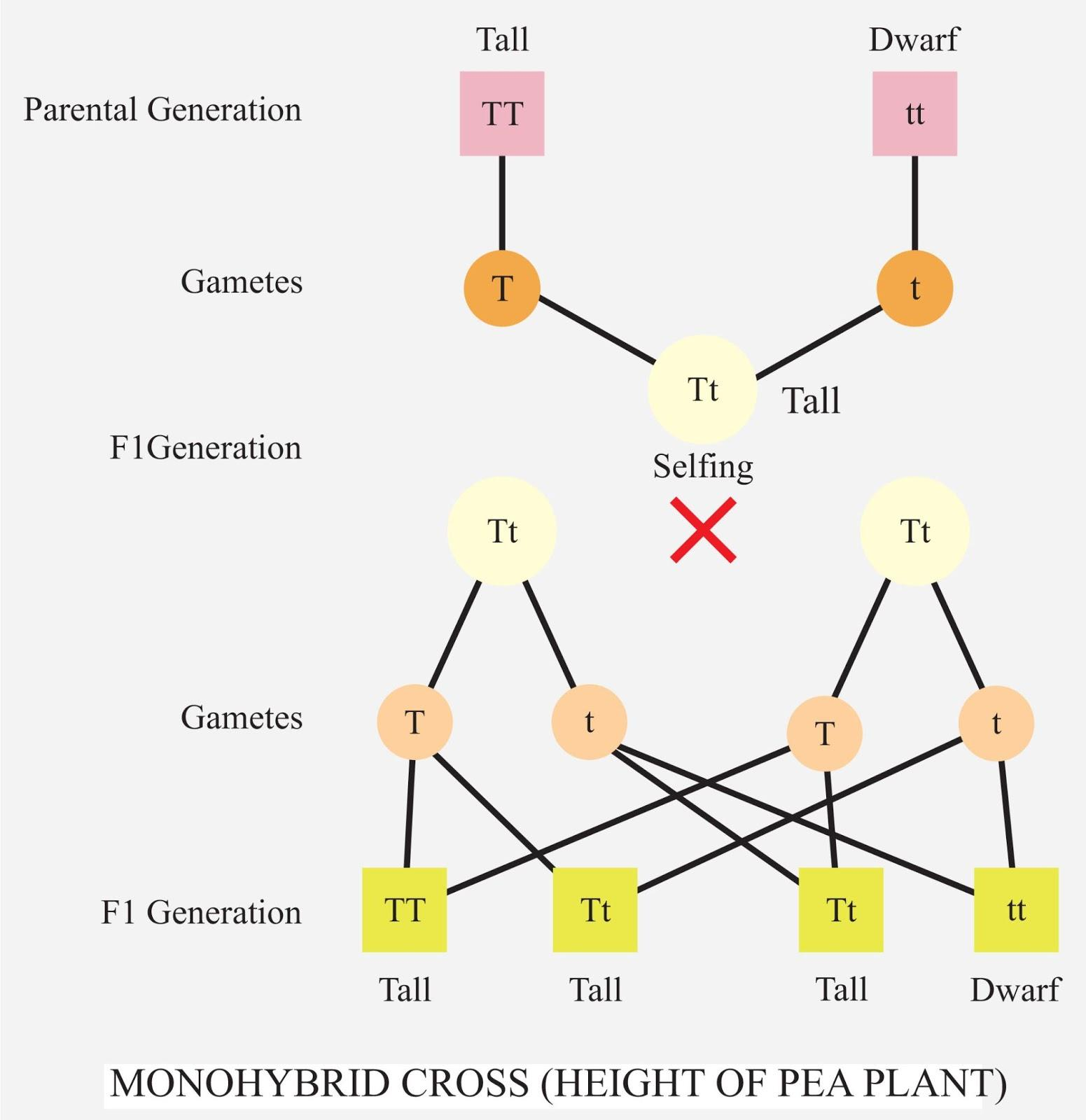
What are some examples of dominant alleles?
Answer
514.8k+ views
Hint: Alleles are often either dominant or recessive. Dominant alleles show their effect even though the individual only has one copy of the allele while the recessive alleles do not show their effect until they are having the two copies of alleles.
Complete answer:
As humans possess two copies of every chromosome, they even have two copies of every gene and locus on those chromosomes. On the locus, each of the genes present are named as an allele. Alleles may either be dominant or recessive. The dominant alleles even when present in heterozygous conditions having only one copy of the allele will show their effect. For example when the allele of brown eyes are dominant in an individual then the presence of even a single allele or the presence of the two alleles will result in the eyes of an individual being brown in color. The effect of recessive alleles are shown only when the individual has two copies of the same allele. For example, When the allele of blue eyes are recessive in individuals then the presence of only two alleles will result in the blue eyes of an individual. If the single allele is present then the individual will not have blue eyes.
An example of a dominant allele is explained below with the help of the following example:
A cross between pure breeding tall plant (TT) and dwarf (tt) plant produces all tall hybrids (Tt). The dominant factor is the factor or the allele that expresses itself even in a heterozygous condition in an individual. Thus it is termed as the dominant character which is the trait of tallness in this example. While the recessive factor is the factor or the allele that expresses itself only when present in a homozygous condition in an individual. Thus it is termed as the recessive character which is the trait of the dwarfness in this example. The selfing of “Tt” produces the phenotypic ratio of 3:1 in the ${ F2 }$ generation which suggests that both homozygous dominant (TT) and heterozygous dominant (Tt) show “tall” phenotype and homozygous recessive (tt) shows “dwarf” phenotype.

Note:
The dominant genes control the trait for a particular organism while the recessive genes only appear when they are found in the homozygous state. The dominant genes are able to express themselves even in the heterozygous state. There may occur codominance if both the alleles are dominant. The resulting characteristic is because both alleles are expressed equally. An example of this is the blood type AB which is the result of the codominance of the A and B dominant alleles.
Complete answer:
As humans possess two copies of every chromosome, they even have two copies of every gene and locus on those chromosomes. On the locus, each of the genes present are named as an allele. Alleles may either be dominant or recessive. The dominant alleles even when present in heterozygous conditions having only one copy of the allele will show their effect. For example when the allele of brown eyes are dominant in an individual then the presence of even a single allele or the presence of the two alleles will result in the eyes of an individual being brown in color. The effect of recessive alleles are shown only when the individual has two copies of the same allele. For example, When the allele of blue eyes are recessive in individuals then the presence of only two alleles will result in the blue eyes of an individual. If the single allele is present then the individual will not have blue eyes.
An example of a dominant allele is explained below with the help of the following example:
A cross between pure breeding tall plant (TT) and dwarf (tt) plant produces all tall hybrids (Tt). The dominant factor is the factor or the allele that expresses itself even in a heterozygous condition in an individual. Thus it is termed as the dominant character which is the trait of tallness in this example. While the recessive factor is the factor or the allele that expresses itself only when present in a homozygous condition in an individual. Thus it is termed as the recessive character which is the trait of the dwarfness in this example. The selfing of “Tt” produces the phenotypic ratio of 3:1 in the ${ F2 }$ generation which suggests that both homozygous dominant (TT) and heterozygous dominant (Tt) show “tall” phenotype and homozygous recessive (tt) shows “dwarf” phenotype.

Note:
The dominant genes control the trait for a particular organism while the recessive genes only appear when they are found in the homozygous state. The dominant genes are able to express themselves even in the heterozygous state. There may occur codominance if both the alleles are dominant. The resulting characteristic is because both alleles are expressed equally. An example of this is the blood type AB which is the result of the codominance of the A and B dominant alleles.
Recently Updated Pages
Master Class 12 Business Studies: Engaging Questions & Answers for Success

Master Class 12 Economics: Engaging Questions & Answers for Success

Master Class 12 English: Engaging Questions & Answers for Success

Master Class 12 Maths: Engaging Questions & Answers for Success

Master Class 12 Social Science: Engaging Questions & Answers for Success

Master Class 12 Chemistry: Engaging Questions & Answers for Success

Trending doubts
The pH of the pancreatic juice is A 64 B 86 C 120 D class 12 biology CBSE

Explain sex determination in humans with the help of class 12 biology CBSE

Draw ray diagrams each showing i myopic eye and ii class 12 physics CBSE

Which state in India is known as the Granary of India class 12 social science CBSE

Using Huygens wave theory derive Snells law of ref class 12 physics CBSE

Dihybrid cross is made between RRYY yellow round seed class 12 biology CBSE




